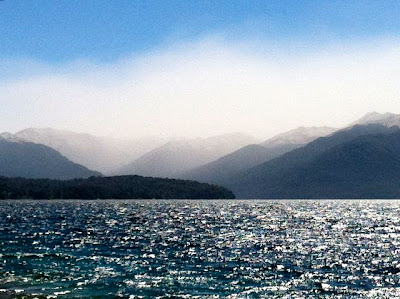The history’s a little more complicated than that, but for
many decades both airlines operated at greater or lesser, mostly lesser, levels
of efficiency, and they often bled money. Once, when I flew on Aerolíneas from Buenos
Aires to Miami in early 1981, I recall no more than about 20 passengers
on the entire plane and, though I wasn’t in first class, I was able to stretch
out across three seats for a good night’s sleep. Admittedly, this is anecdotal
evidence from a single experience, but it's not hard to imagine the scale of losses on one of the continent's most popular international routes.
LAN underwent privatization in late 1989, while Aerolíneas
did so a year later, but since then their histories could not be more
different. Under its Chilean ownership – which once included current Chilean
president Sebastián
Piñera - LAN has modernized its fleet, professionalized its services, and
expanded its routes (with subsidiaries in Ecuador, Peru, Colombia and
Argentina). Most recently, it has merged with Brazil’s TAM
to form the LATAM
Airlines Group, the tenth-largest system in the world. While retaining their
brand names, LAN and TAM together will cover some 150 destinations in 22
countries. They are also partners of the OneWorld
Alliance, with codeshares and frequent flyer programs around the globe.
Aerolíneas has moved in the opposite direction. Its
privatization failed for a variety of reasons – some of them political
rather than economic – and its operations became notorious for delays and cancellations under a
series of Argentine and Spanish owners; at one point, its only foreign
destination was Madrid. The company even suffered a bankruptcy in 2003 and, in 2008,
the government of the late President Néstor
Kirchner expropriated and renationalized it.
I'd like to be able to say that state management has
improved matters but, to all appearances, things have gotten worse. Now managed by
political appointees allied with the Peronist youth wing La Cámpora, Aerolíneas remains an operational and financial catastrophe. In a recent TV
program, investigative
journalist Jorge Lanata detailed further
deterioration under the new regime, which has expanded its personnel even
as it has reduced its schedules and continues to hemorrhage losses.
I can’t repeat all Lanata’s findings here, but a couple
examples really stand out. The company is presently paying US$565,000 monthly
rent for a Jumbo jet, parked at the international airport at Ezeiza, that it
cannot return until the lease expires in February of 2014. Its only recent use
has been a high-profile
trade mission that current president Cristina Fernández led to Angola – a
country whose ability to acquire Argentine exports is limited – last month.
Perhaps the most damning stat, though, is the fact that the
company fills every one of the 280 seats on its daily Buenos Aires to Madrid
route, but that it would have to sell another 40 just to break even. On top of
that, only recently has it managed to negotiate codeshare agreements with
AirFrance-KLM in Europe and Delta in the United States; for many years, the
company had no frequent flyer program, and only recently has it joined the
AirFrance-KLM Flying Blue program.

























